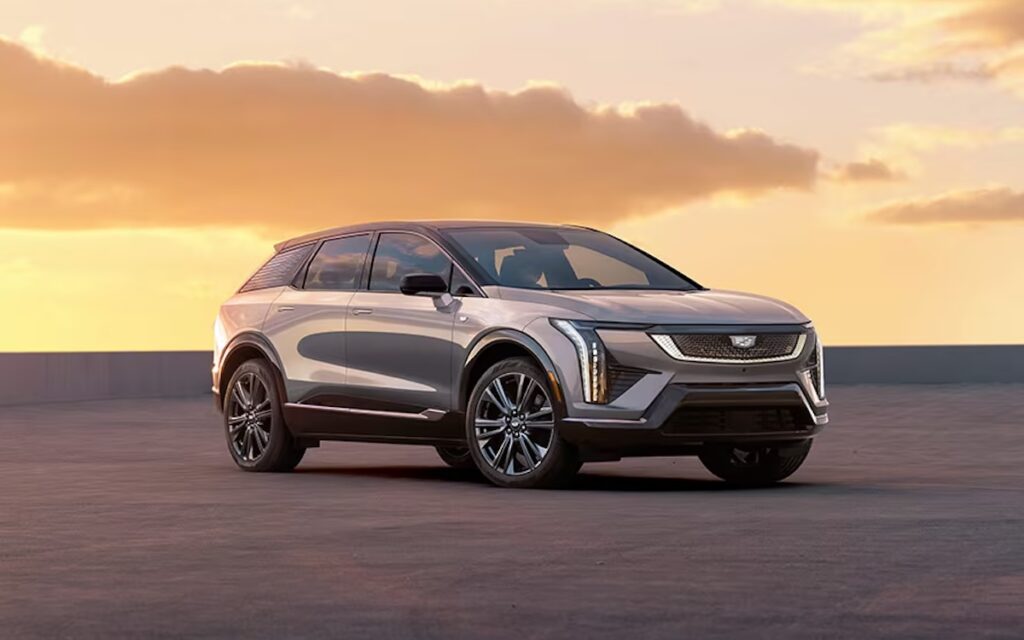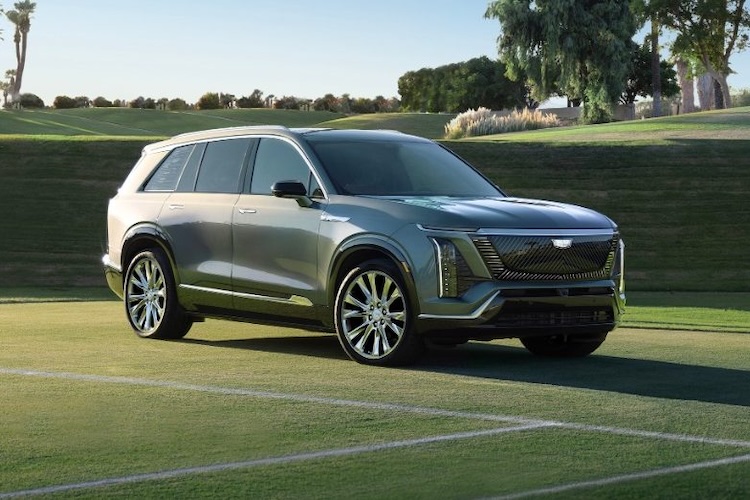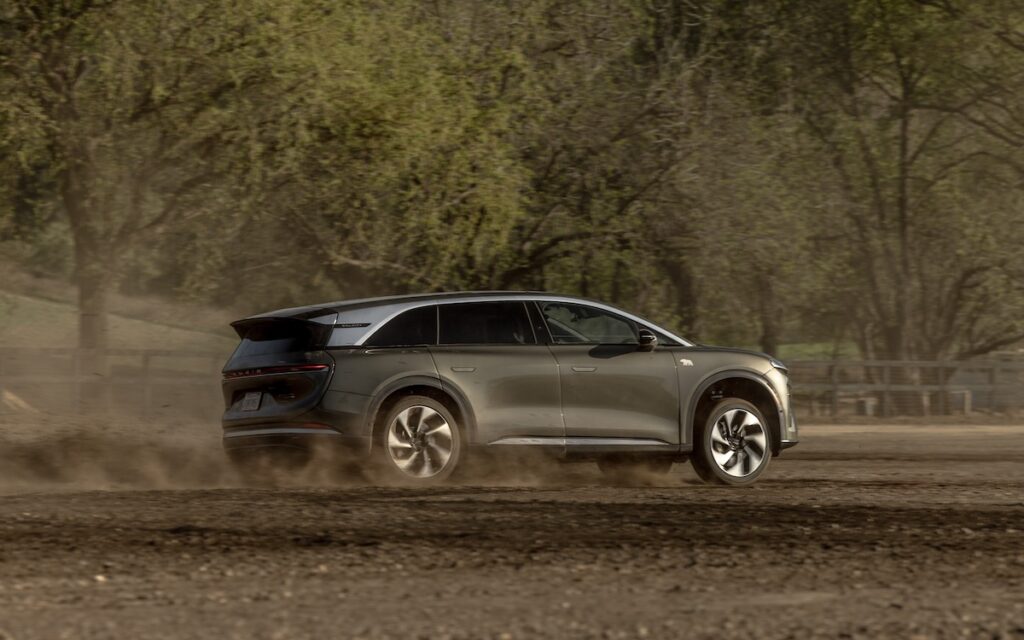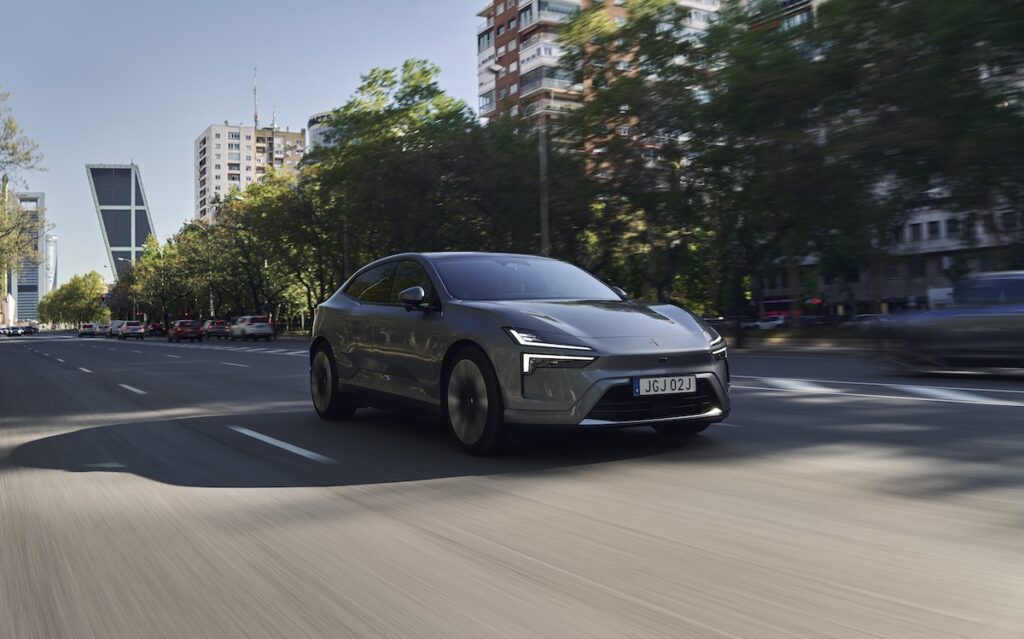This new group of EVs makes a powerful statement in Q2 2025. Let’s see how the Canadian market responds
Here are the latest arrivals to the Canadian market in Q2 2025. Image: Electric Autonomy
This new group of EVs makes a powerful statement in Q2 2025. Let’s see how the Canadian market responds
Here’s the thing about new vehicle development — it’s a long, drawn-out process.
We’re talking five, six — even seven years long, in some cases.
Now, this particular moment may not seem the most opportune time for North American carmakers to release a new vehicle.
Certainly, some manufacturers have decided to reverse course and delay the release of new EVs. But what’s incredible to see is that other companies are barreling forward with breakneck speed.
The slate of new EVs coming to Canada in Q2 are a compelling bunch, giving new EV buyers more choice than ever before. Here’s a brief rundown on what arrived in showrooms across the country or is set to do so this quarter.
Cadillac Celestiq

An entire article could have been devoted to just one brand because the news coming from Cadillac HQ of late has been fast and furious.
At the very top of the electrified list is the Cadillac Celestiq, the handcrafted and utterly bespoke halo model for the brand, which just recently began production.
Priced at an eye-watering $495,000 to start, this concept-car-come-to-life will not mesh well with everyone’s wallet. But what makes the Celestiq so appealing is this: It proves what the best and brightest at General Motors can accomplish when they’re given the requisite amount of freedom.
The car is a design masterpiece, a completely unique fastback shape that stretches out for well over five metres — incredibly, it’s longer than Cadillac’s gigantic Escalade SUV. But scale only tells part of the story.
Powered by a 111-kWh battery pack, the Celestiq is capable of rapid acceleration and a range of some 488 kilometres. Even more impressive are the car’s handling attributes, which give the impression that this Cadillac was engineered to carve corners when necessary and ensconce passengers in ultimate comfort at all times.
Cadillac Lyriq-V

Also joining the Cadillac fleet this summer are a trio of other new models.
First up is the Cadillac Lyriq-V, the higher-performing version of the brand’s mid-size SUV.
Billed as the “quickest Cadillac ever” and the first all-electric “V-branded” Cadillac in history, this SUV features a staggering 615 horsepower and an estimated range of 458 kilometres.
Cadillac Optiq

Slotting in under the Lyriq in terms of size is the Cadillac Optiq.
Built on the same all-electric platform as the Chevrolet Blazer EV, the Optiq features a dual-motor powertrain and an 85-kWh battery with an anticipated driving range of 486 kilometres.
This model is the nominal entry-level EV for the brand, the furthest thing you can get from a Celestiq in terms of cachet, in other words. But it has slick styling and any number of luxury features and amenities across its four trim levels.
Cadillac Vistiq

Stepping up from the Lyriq, we find the all-new Cadillac Vistiq.
This three-row SUV, with available seating for up to seven passengers, resembles a scaled-down Escalade from certain angles, and that was no doubt the intention.
With a dual-motor, all-wheel drive powertrain and an estimated 615 horsepower, the Vistiq promises to be a smooth highway cruiser.
Lucid Gravity

Speaking of smooth, there’s the Lucid Gravity, which is now available for sale in Canada with deliveries taking place soon.
The second model to come from the start-up manufacturer, the Gravity is a three-row luxury SUV with a 123-kWh battery, which allows for a range of an estimated 708 kilometres.
Built on a 900-volt architecture, the Gravity gains 320 kilometres of range in less than 15 minutes when hooked up to a suitably fast DC fast-charger.
The engineers at Lucid say it’s the fastest-charging vehicle for sale in North America.
Polestar 4

Joining the all-electric brigade after some time lost in limbo is the Polestar 4, a blend of coupe and crossover that comes in two different versions.
The entry-level model features a single-motor powertrain, 272 horsepower and a range of some 483 kilometres. Meanwhile, the dual-motor Polestar 4 comes out swinging with 544 horsepower and a range of 435 kilometres.
Both share a 100-kWh battery pack and 400-volt architecture; the dual-motor version is officially the fastest Polestar EV yet.
The first Polestar 4 models produced were built in China; due to tariffs imposed on Chinese-built vehicles last year, these vehicles never made it to North America.
A new Polestar facility in South Korea has started building 4s for Canada and these can be ordered now.
Hyundai Ioniq 9

Another brand new model to hit the market is the Hyundai Ioniq 9, the first all-electric three-row SUV for the South Korean brand. Mechanically very similar to the Kia EV9—easily one of the most competitive EVs out there — the Ioniq 9 comes in three different versions.
The Essential is a single-motor, rear-wheel drive model with an estimated range of 539 kilometres. The Preferred AWD is just that, an all-wheel drive model with motors mounted at the front and rear axles. This version has an estimated range of 515 kilometres, while the higher-performing Preferred AWD+, with 160-kW electric motors front and back, has an estimated range of 500 kilometres.
All models share a 110.3-kWh battery pack that can charge from 10 to 80 percent capacity in just 24 minutes.
Refreshed models Hyundai to Toyota
The EV segment is an ultra-competitive one, especially in these uncertain times.
As further evidence of the fact, just consider a handful of revised offerings, the refreshed Kia EV6, Hyundai Ioniq 5, Subaru Solterra, Lexus RZ and Toyota bZ (formerly known as the bZ4X).
The 2025 Hyundai Ioniq 5 features larger battery packs, 63-kWh numbers for its standard range versions and 84-kWh packs for the long-range models.
The Ioniq 5 will also be the first Hyundai EV with a built-in Tesla NACS charging port and a new trim version, the off-road ready XRT, joining the line-up.
The 2025 Kia EV6 has also received a larger 84-kWh battery pack and a NACS charge port.
For the Subaru Solterra and the AWD version of the Toyota bZ, the changes for the new model year include a larger 77-kWh battery pack — which provides an estimated range of up to 460 kilometres — and NACS charge ports. Both can recharge from 10 to 80 per cent battery capacity in about 35 minutes.
Finally, the revised Lexus RZ line, effectively a more luxurious version of the Toyota bZ, features new powertrains and a front-wheel drive version — the RZ 350e that has a 77.0-kWh battery pack that’s good for an estimated 480 kilometres of range.
The middle of the range model, the RZ 450e AWD, features electric motors at both axles and the same battery pack. Quicker than the entry-level model, but also heavier due to the addition of the second motor, this version should travel about 418 kilometres on a full charge.
The top-of-the-line version is the RZ 550e F Sport AWD. This one boasts a 0-to-100 km/h sprint time of around four seconds. However, the penalty for added performance is decreased range, which should hover right around the 360-kilometre mark.






